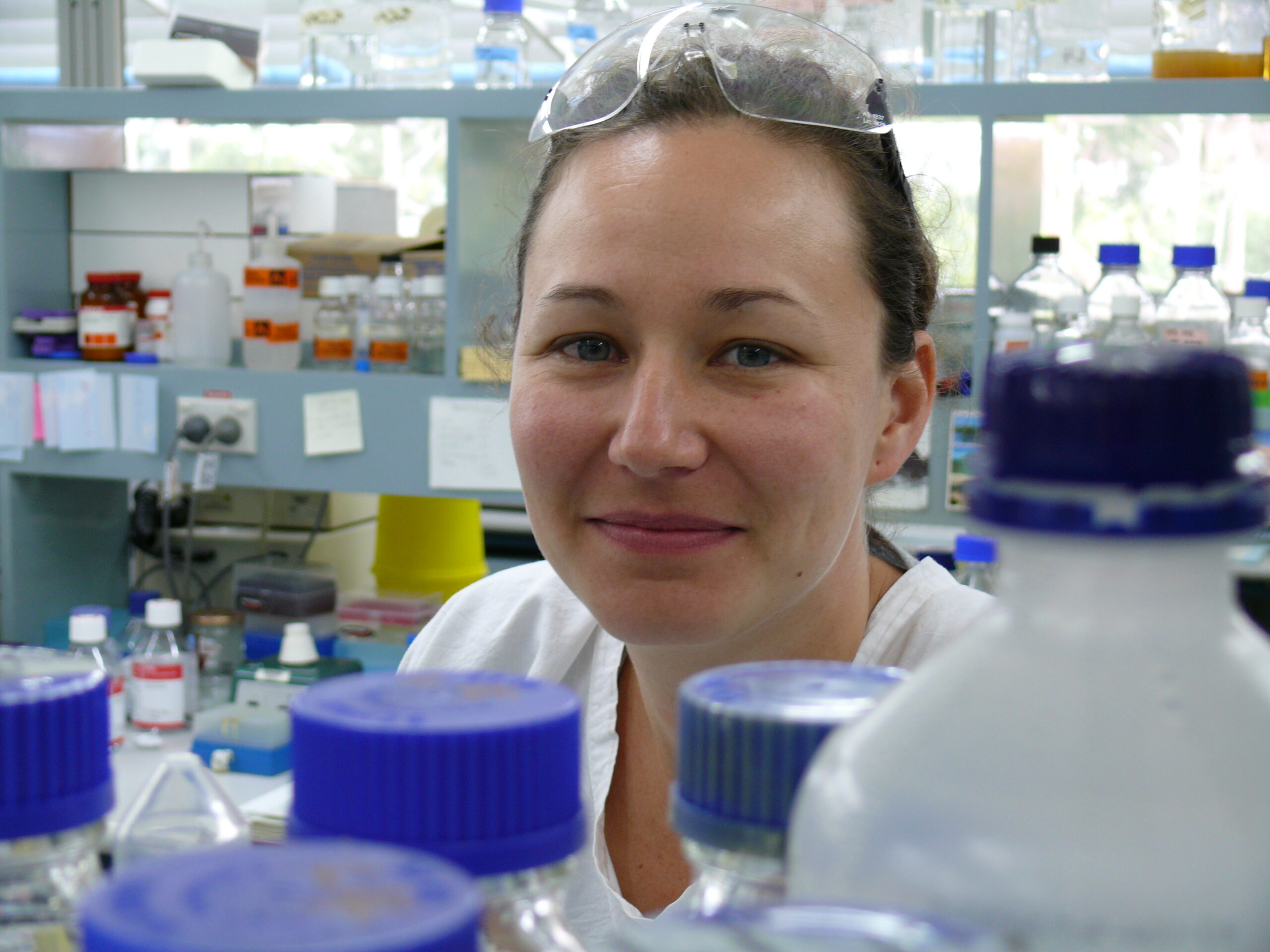The CTF NF1 Gene Therapy Initiative is funding a research program focused on gene-based therapeutic approaches for the treatment of NF1. We asked one of these researchers, Samantha Ginn (Children’s Medical Research Institute, Australia), to tell us more about her work and how she ended up in the NF field.
What are you hoping to learn from this project?
Dr. Ginn: The project has two main objectives. The first is to explore the feasibility of a novel genome editing strategy for correcting multiple NF1 mutations with a single approach. The second aims to bioengineer new adeno-associated virus (AAV) capsid variants for improved gene delivery to primary human Schwann cells. Efficient gene delivery is essential, not only for treating NF1, but also for other diseases where targeting Schwann cells would provide therapeutic benefit.
What are your long-term research goals? What are you looking to achieve?
Our long-term research goal is to build on exciting preliminary data developed under the CTF-funded gene therapy project grant. As part of the project we applied directed evolution to develop novel AAV variants that can transduce primary human Schwann cells with high efficiency. We will now evaluate the clinical utility of these bioengineered AAV capsid variants by testing on an expanded cohort of Schwann cell donors and investigate aspects of vector manufacturability.
What does it mean to you to receive this funding from CTF?
Funding has allowed us to identify new bioengineered AAV capsids that target primary human Schwann cell with greater efficiency than any previously reported, a major advance for the field. This grant also recognizes our expertise in AAV vector-based gene delivery systems and genome editing technology which we have used in combination to design novel therapies to treat NF1. I have really enjoyed the collaborative interactions with the CTF, it has been a real privilege to work with their team.
What brought you to the NF research field?
I have been working in the gene therapy field for many years now, predominantly targeting the bone marrow or liver. Most recently I have been developing genome editing technology to treat genetic metabolic liver disease and have been achieving editing rates that would the therapeutic if recapitulated in the clinic. When I saw the NF1 gene therapy initiative from the Children’s Tumor Foundation, it was aligned perfectly with my experience in genome editing technology and the pioneering AAV capsid technology being performed at our Institute, the Children’s Medical Research Institute, being led by co-investigator Associate Professor Leszek Lisowski. We also partnered with Associate Professor Jeffrey Biernaskie (University of Calgary) who has deep expertise in Schwann cell biology. This hasn’t been the traditional entry into the NF research field, but our team has made some exciting progress and we hope to continue to this research to benefit the NF community.
What do you like to do when you’re not in the lab?
When I’m not in the lab, I enjoy spending time with my family or catching up with friends. Our weekend usually starts with sports for the kids and then we try and make time for a special dinner either as a family or with friends. I also enjoy unwinding with a good book or movie and to get through the most recent lockdown, we have been reading “The Hobbit” together which has been really lovely.
Update: Read about CTF’s subsequent investment in Dr. Ginn’s research here.


